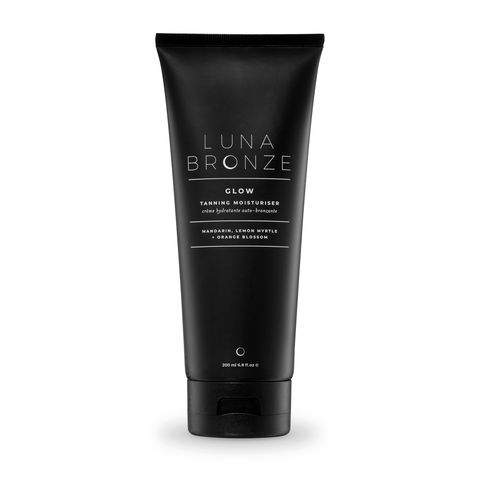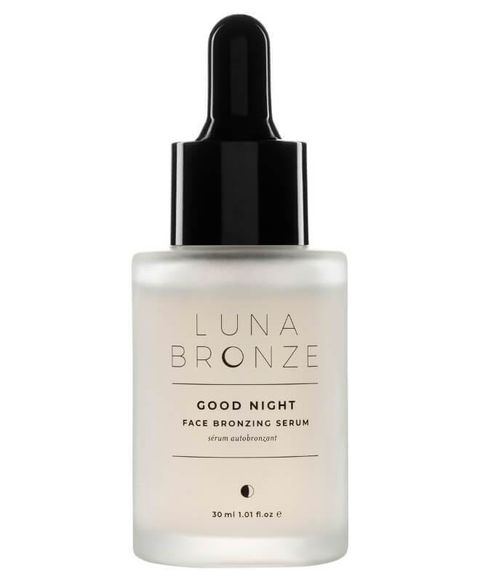Like most bad news, finding out that you have cancer is one of those things that doesn’t feel like it’s ever going to happen to you. Until, of course, it does — as it did for Maddy Balderson, who was diagnosed with skin cancer at 27.
She’s far from alone. Skin cancer is the most common form of the disease in the United States, with 9,500 people receiving a diagnosis each day. Not only did the experience inspire Balderson to completely change the way she approaches sun protection, but it also led her to co-found the Australia-based sunless tanning brand Luna Bronze.
Growing up in Australia, the sun ruled her life, says Balderson. “Any sunny day during my teens and early 20s was spent at the beach in a bikini without any form of sun protection — no hat, no shade, no sunblock,” she recalls. While Balderson’s skin tone is fair and freckled, she’s able to tan. As a result, she’d lay out for hours sans sunscreen to see just how bronze she could get. In fact, “it was almost a contest among our girlfriends — passing the tanning oil around and roasting ourselves to see who could get the deepest tan,” she says.
In her mid-20s, she developed a rough, pink-toned patch of skin along her jawline. One morning she noticed that the area was bleeding, so she went to her primary doctor, who promptly dismissed it as dermatitis. “It wasn’t until I visited my facialist that everything clicked,” she says. “She told me that she had seen the exact type of condition before and made me promise to visit a dermatologist as soon as possible. A client of hers had recently lost a part of her nose from skin cancer.”
Soon after, a dermatologist diagnosed Balderson with a form of basal cell carcinoma, or BCC. At first, she didn’t think much of it, assuming that the patch would be burnt off or removed superficially, and that would be it. However, “when I met with the plastic surgeon, I realized it wasn’t going to be that simple,” she says. “I was going to have a large scar on my jawline.” That’s because the location of the skin cancer (near her lymph nodes), the existing damage to the tissue beneath it, and the invasive nature of the BCC itself called for a more complicated removal protocol — along with the potential for radiation treatments.
That’s when it felt real, says Balderson. “I realized that if I didn’t change my ways, I was going to end up covered in these things and scarred for life.” She overhauled her sun habits. Now, she regularly applies — and reapplies — sunscreen with an SPF of at least 30. While she still spends time at the beach, she sits in the shade under a beach umbrella with UPF 50+ (a measurement of UV protection in fabric).
Balderson felt good about staying out of the sun, however, she missed the little bit of confidence that she got from having a tan, and found that the sunless tanners on the market weren’t up to her standards. “I wasn’t able to find any self-tanner that had an emphasis on skin-loving ingredients and smelled good, or didn’t provide unnatural results,” she says. “I mentioned my search to my best friend, Rhiannon Hall, and she immediately suggested that we create this product ourselves.”
Together they created Luna Bronze. It took almost a year to bring the brand’s Glow Gradual Tanning Moisturizer onto shelves in 2015 — the co-founders used their savings to fund it. Fortunately, the formula was a hit. Still, it was a scrappy operation — “our biggest challenge in the early days was juggling Luna Bronze, our side hustle, with our full-time jobs,” says Balderson.
The two pulled it off. The line is now sold in 10 countries and loved by celebrities. The debut of the brand’s Good Night Face Bronzing Serum had a waitlist of 10,000 people and then sold out three times.
While her experience is a cautionary one, Balderson sees it as a motivator for her work. After all, it’s what inspired her to change how people, including herself, get a tan. “Your health is more important than your looks,” she says. “Take my story as a learning experience — and a chance to change your ways in the sun.”
This content is created and maintained by a third party, and imported onto this page to help users provide their email addresses. You may be able to find more information about this and similar content at piano.io


